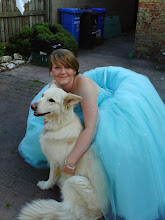In what ways does your Media product use, develop or challenge forms and conventions of real media products?
Within my magazine, I chose to use the conventional features of real magazines because it would help it come across as a real piece of media production and would make it more realistic. The features on the front page which make it conventional and realistic are the headline, edited original picture, features within the magazine, bar code, price and date. In addition to this, the contents page things such as page numbers, story titles and page information, comparison or links with front cover and a picture. The double page spread also follows conventional rules used by real magazines. This is because it includes things such as a large main focus picture, headline, page number, continued theme from throughout the magazine and a body of text.
How does your Media product represent particular social groups?
The social group I am aiming my magazine at is that of aspiring musicians in their mid-late teens and early 20’s. I tried to represent this social group in my magazine by including such things as stories of successful young musician, easily organised layout to make it easy for everyone to enjoy, and consistency within the colour, style and theme to make it flow and come across more appealing to the audience I am aiming it at.
What kind of Media institution might distribute your media product and why?
I think the media institution I would want to distribute my media product is Emap Media. This is because they already produce many music magazines such as Sneak, Mixmag, Q and Mojo. Although this company makes many popular magazines, it doesn’t produce one aimed at the subject of the magazine itself, for example, my magazine is aimed at people who are aspiring to be musicians, the stories and information are about and created by successful young aspiring young musicians, that are wanting to tell their stories.
Who would be the audience for your Media product?
The audience of my magazine will be both males and females aged between about 13-20. The magazine focuses on the future of aspiring musicians and this is the group of people I am aiming it at.
How did you attract/address your audience?
To attract my audience, I deliberately made it clear that the magazine was aimed at aspiring young musicians by putting on the front cover the phrase; ‘a star is born’. This straight away implies that the main story is about someone who has just entered the music industry, which will make the intended audience want to read to see how they became so successful.
In addition to this, I addressed the target audience by using the page information in the contents page. I added in such things as gossip page, your pictures and your say. This automatically involves the reader and allows them to feel part of the things going on. It also gives them the opportunity to get in touch with other people and share their own musical or just life experiences.
What have you learnt about technologies from the process of constructing this product?
The main techniques that I have learnt during the production of my magazine are how to use editing programmes, such as Photoshop, to edit my original photos and also how to use publisher to arrange the pages of my magazine. In addition to this I have taken note of and learnt the important aspects and conventions to be added to a magazine which are essential for making a realistic piece of media.
Looking back at the preliminary task, what do you feel you have learnt in the progression from it to the full product?
From doing the preliminary task, I have found I have a strong understanding of the essential conventions of magazine to add realism and also what things are necessary to create the effect of a true life magazine. I have also found I understand what’s important within the language, ideologies, institution, audience and representation, and how each one has to relate to one another so the final product makes sense.





+005.jpg)
+005+edit+front+cover+3.jpg)
+027+edit1.JPG)
+028.jpg)
+026.jpg)
+025.jpg)
+024.jpg)
+022.jpg)
+021.jpg)
+020.jpg)
+019.jpg)
+017.jpg)
+013.jpg)
+011.jpg)
+010.jpg)
+009.jpg)
+008.jpg)
+005.jpg)
+003.jpg)
+002.jpg)
+001.jpg)
